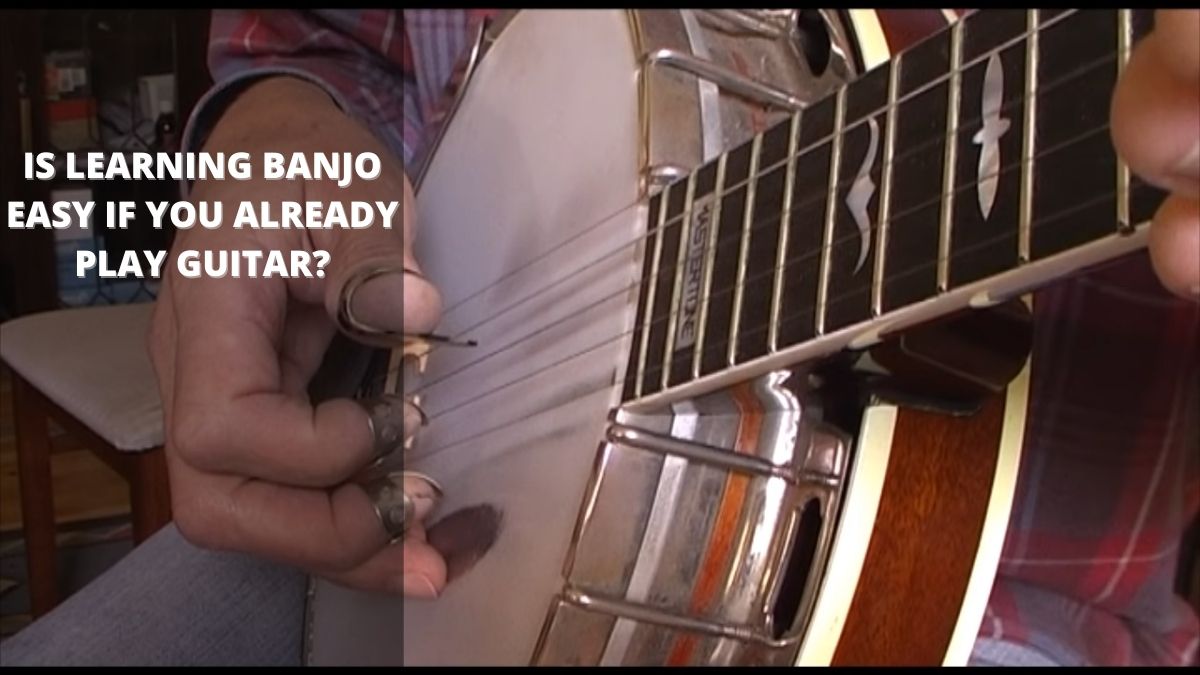Who says you can’t teach an old dog new tricks? If you’re already a guitar player, learning banjo might be a breeze.
The answer may depend on the person. Some people who already play guitar may find it easy to learn banjo because they are familiar with the fretboard and chords. Other people may find it more difficult because the banjo is a string instrument that is played with the fingers and not a pick.
The article will be discussing whether or not it is easy to learn banjo if you already play guitar.
What are some similarities between banjo and guitar?
There are many similarities between the banjo and the guitar. Both instruments have a neck and a body, and both have strings that are plucked or strummed. Both instruments can be played solo or in a group, and both can be used for a variety of genres of music.
One similarity between the banjo and the guitar is that they both have a neck and a body. The neck of the banjo is usually shorter than the neck of the guitar, but both instruments have a neck that extends from the body. The body of the banjo is typically round, while the body of the guitar is typically oval-shaped.
Another similarity between the banjo and the guitar is that they both have strings that are plucked or strummed. The strings on the banjo are typically made of nylon or gut, while the strings on the guitar are typically made of steel. Both instruments have a tuning peg at the end of the neck, and the strings are tuned to different pitches to create different notes.
Both the banjo and the guitar can be played solo or in a group. When played solo, the banjo or the guitar can be accompanied by other instruments, such as a piano or another guitar. When played in a group, the banjo and the guitar can be part of a band or orchestra.
Finally, both the banjo and the guitar can be used for a variety of genres of music. The banjo is often associated with country music, while the guitar is often associated with rock music. However, both instruments can be used for a variety of genres, including jazz, blues, and even classical music.
What are some differences between banjo and guitar?
The banjo and guitar are two-stringed instruments that are very popular in American music. Both instruments have their own unique sound and playing style. Here are some of the main differences between the two instruments:
The banjo has a much shorter neck than the guitar. This makes it easier to play fast, rhythmical patterns on the banjo. The guitar has a longer neck, which gives it a greater range of notes.
The banjo has a very distinctive sound, due to its resonant body and the use of a fifth string. The guitar has a more mellow sound and can be played in a wider range of styles.
The banjo is traditionally played with a pick, while the guitar is played with the fingers. This gives the banjo a brighter, more percussive sound, while the guitar has a smoother, more flowing sound.
The banjo is usually played in a more upbeat, country style of music, while the guitar can be used for a wide range of genres, from country to rock to jazz.
So, those are some of the main differences between the banjo and guitar. Both instruments are great to play, and which one you choose will depend on your own personal preference.
How easy is it to learn banjo if you already play guitar?
It is relatively easy to learn to play banjo if you already play guitar. The two instruments share many similarities, including the number of strings and the tuning. However, there are some important differences between the two instruments that you will need to be aware of.
One of the most significant differences is the size of the instrument. A banjo is typically much smaller than a guitar, which can make it easier to carry around and play. Additionally, the strings on a banjo are usually thinner than those on a guitar, which can make them easier to press down.
Another important difference is the way the strings are plucked. On a guitar, the strings are plucked with the fingers. On a banjo, the strings are plucked with a pick. This can take some getting used to, but it is not a difficult task.
Finally, the timing of the music is different on a banjo than it is on a guitar. On a guitar, the music is typically played in 4/4 time. On a banjo, the music is played in what is known as “clawhammer” style, which is in 2/4 time. This can be a bit confusing at first, but it is not a difficult concept to grasp.
Overall, it is relatively easy to learn to play banjo if you already play guitar. The two instruments share many similarities, but there are some important differences that you will need to be aware of. With a little practice, you will be playing banjo like a pro in no time.
What are some tips for learning banjo if you already play guitar?
There are a few tips that can help when learning the banjo if you already play guitar. One is to start by learning the basic chords. Then, you can begin to learn the strumming patterns.
You can also try to find a banjo teacher who can help you with the specific techniques involved in playing the banjo. Additionally, there are a number of online resources that can be helpful when learning how to play banjo.
Is it easy to switch from guitar to banjo?
It is relatively easy to switch from guitar to banjo, as both instruments share many similarities. Both instruments have strings that are plucked or strummed, and frets on the neck that the player presses down to create different notes. The main difference between the two instruments is the banjo’s drumhead, which gives the banjo its distinctive sound.
Players who are already familiar with the guitar should have no trouble adapting to the banjo. The left hand technique is similar on both instruments, and both instruments are typically tuned in fourths (although the banjo is usually tuned to a higher pitch than the guitar). The right hand technique is also similar, although the banjo is usually played with a pick, rather than the fingers.
The main challenge for guitarists when switching to banjo is getting used to the new instrument’s sound. The banjo has a very different timbre than the guitar, and it can take some time to get used to the different sonic palette.
Additionally, the banjo is often played in a different style than the guitar, with a more syncopated, rhythmic approach. This can be a challenge for guitarists who are used to playing more melodic, lead-oriented parts.
Overall, switching from guitar to banjo is not a difficult task, and many guitarists have made the transition successfully. With a little practice and patience, anyone can learn to play this unique and rewarding instrument.
Do guitar skills transfer to banjo?
When it comes to learning new instruments, the question of whether skills learned on one instrument can be transferred to another is a common one. In the case of guitar and banjo, the answer is yes, to some extent.
Guitar and banjo share some similarities in terms of their construction and how they are played. Both instruments have strings that are plucked or strummed, and both have frets on the fingerboard that are used to create different notes.
However, there are also some important differences between the two instruments. The banjo has a much shorter neck than the guitar, and the strings are tuned differently. The banjo also has a resonator that gives it a distinctive sound.
Despite these differences, there are some skills that can be transferred from guitar to banjo. For instance, both instruments require the use of basic chords and melodies. In addition, both instruments can be played solo or in an ensemble setting.
So, if you’re thinking about learning the banjo, don’t be discouraged if you don’t have any experience with the instrument. With a little bit of practice, you’ll be able to transfer some of your guitar skills and start making beautiful music on your new banjo in no time.
Should I learn guitar before banjo?
The short answer is no, you don’t need to learn guitar before banjo. In fact, many banjo players never learn to play guitar at all.
However, there are a few advantages to learning guitar first. For one, it will make learning banjo a bit easier since you’ll already know how to read music and chord shapes.
Guitar also gives you a better foundation for learning other stringed instruments like mandolin, fiddle, or Dobro. And if you ever decide to switch from banjo to guitar, you’ll have a head start.
ultimately, the decision of whether or not to learn guitar before banjo is up to you. If you have the time and patience to learn both instruments, go for it. But if you’re just starting out, don’t feel like you need to learn guitar first.
Conclusion
The answer to this question is a resounding yes. If you already know how to play guitar, learning banjo is a piece of cake.
The two instruments share a lot of similarities, so the transition is pretty seamless. Plus, there are plenty of resources out there to help you get started (we recommend the Banjo Primer by Ross Nickerson).


